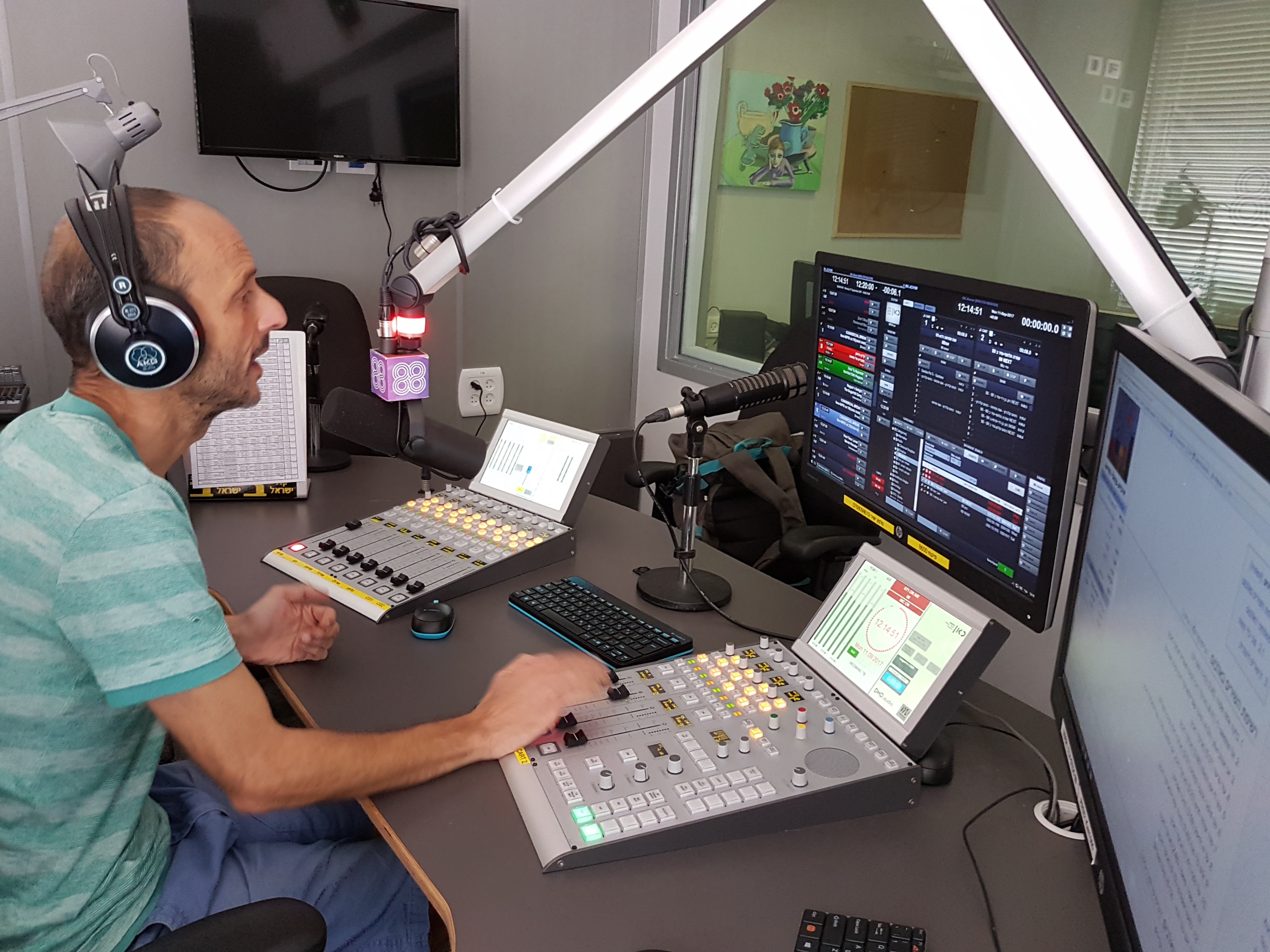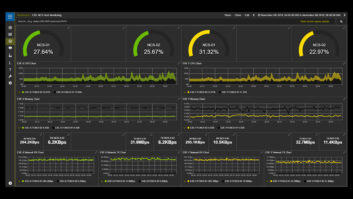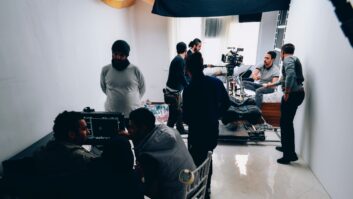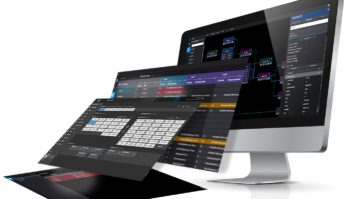
When the Israeli Public Broadcasting Corporation (IPBC) commenced broadcasting on 15th May, it marked a rebirth of sorts for the Israeli Broadcast Authority (IBA), the 70-year-old state TV and radio broadcaster that abruptly ceased broadcasting six days prior. In addition to a structural reset meant to strengthen public committees and rein in operational costs, the launch of IBPC, publicly known as KAN to viewers and listeners, inspired a new technical design to the workflow and infrastructure.
A key design strategy from Israeli systems integration firm Broadcast Design LTD was to integrate a broadcast workflow into an IT infrastructure for all technical systems and operations at the main network location in Jerusalem.
The scale of the project is impressive: A total of 20 studios support three over-the-air TV channels (including Haarutz Ha-Rishon in analogue and HD, plus news/factual programming on Channel 33) from its automation system as well as separate cable/satellite feeds, eight FM stations, and seven pure internet radio feeds. Future expansion plans will increase capacity to more than 30 broadcast studios.
Micha Blum, owner and president of Broadcast Design, was tasked with bringing together the design and installation across studio furniture and cabling through to all hardware and software. And while the goal was to enable content sharing across all studios, each one also needed to be able to operate autonomously in the event of a central system failure.
The initial project tender called for an audio over IP networking system versus a legacy wired architecture. Blum looked to the various digital networking options on the market. He quickly turned his attention to a Dante Audio over IP network from Audinate to support low-latency, multichannel audio transport between studio PCs and the central IT infrastructure. The Dante network also interfaces with MADI connections between the various studios.
Forward momentum
Working within the Dante universe gave Blum a large variety of hardware and software options to support on-air and production operations. In the end, he integrated about 50 Dante-enabled hardware devices within the TV and radio workflows, including telephone hybrids, audio consoles, and broadcast automation systems.
A big part of the cost savings from came from using Dante Virtual Soundcard for PC-based audio distribution.
“With more than 20 studios to build, each featuring at least three PC workstations and 32 automation servers for continuous playout and logging, we immediately saved about $15,000 for IPBC by using a Dante Virtual Soundcard,” said Blum.
According to Blum, the project uses more than 200 Dante Virtual Soundcards, which are installed on multiple PC workstations across more than 20 studios and on multiple news, editing and production desks, as well as in the main master control room. The Dante Virtual Soundcards operate in conjunction with 32 off-the-shelf IT servers to support the network’s AUDISI-ONE Automation system.
“Adding audio to an IT server is an enormous challenge with modules that lack drivers with the OS servers, and PCI ports for cards,” said Blum. “Dante eliminates that problem with an ease of audio integration that otherwise does not exist in IT.”
Additionally, Dante modules have been added to the facility’s DHD audio 52/RX console and associated 52/XC2 Cores for digital signal processing. Since the DHD audio has dedicated Audinate modules, operators have the flexibility to send audio from Dante Virtual Soundcards to the broadcast console within seconds, from any PC on the network. Operators also use the Dante network to send audio to live streaming encoders, and the DHD audio solutions also accommodate MADI-to-Dante conversion between studios.
Blum estimates he saved a large amount of money by using an off-the-shelf managed switch and standard network cabling with Dante.
“That plays a big role all the cabling and connections that come with integrating a legacy system,” said Blum. “You connect the network cable and you’re done, so what would have taken weeks instead took days. And, the return on investment is immediate when IPBC chooses to add new channels to the network in the future. Dante gives you the flexibility to more easily scale with that growth compared to a traditional legacy system.”
Blum points to the Dante modules added to the facility’s DHD audio 52/RX console and associated 52/XC2 Cores for digital signal processing as important to scalability and redundancy. In master control alone, the system integrates up to four Dante 64-channel modules to fulfill all broadcast audio needs across automation, stereo signal logging and live streaming.
“These are modular broadcast consoles with DSP cores, and you can add modules to increase capacity,” said Blum. “By default, the DHD cores support four channels, and we added the DHD Dante-enabled module to support up to 64 channels. It’s a building-block approach that we use in our studio, and is very simple.”
Since each studio has its own Dante-enabled DHD audio 52/XC2 Core digital signal processor and localized switch to the Dante network, it enables a highly efficient way to share content while also fortifying network redundancy.
“All of the studio PCs connect to the core managed switch, but we can disconnect and reconnect any studio for any reason,” said Blum. “We could have added one large DHD audio core in master control and routed everything over one switch, but we elected for each studio to have a dedicated Dante-enabled DHD audio module. This provides an extra layer of Audio over IP redundancy that only Dante provides, as every studio can act as standalone architecture.”
Talkback encouraged
The TV studios add Dante-enabled AVT MAGIC THipPro IP telephone hybrids. Each unit supports 16 hybrids with a hybrid output to support intercom, IFB, field reporters, and live callers over recorded hotlines. Blum adds that the Dante-enabled AVT solution added a significant cost savings to the project from a wiring and labor perspective.
“The AVT system provides a Dante output to seamlessly bring the audio from any phone call onto the network,” said Blum. The three AVT units provide 48 hybrids collectively, and in a legacy solution the amount of space and wiring requires to house and support those units would have been very significant. It is a substantial return of real estate to these studios and master control.”
The main IPBC studio location in Jerusalem communicates with four other locations, including studios in Tel Aviv and Haifa. For remote intercom and contribution and distribution of video and audio, Blum integrated a mix of Prodys and Barix systems. Both companies offer IP-based video and audio encoders and decoders to for transport across wide-area networks.
“The Prodys system is sued to send uncompressed signals between studio sites and to transmitters, while Barix is used for intercom and back-up audio feeds,” said Blum. “It’s a great way to support talkback requirements across distant studio locations. We also use the Barix Exstreamer 110 decoders as an audio receiver and player for the radio stations. It’s a versatile device that fills the role of an air monitor in this case. We can listen in to the feed to ensure quality control.”
With the first 20 studios now on the air, Blum remarks that IPBC is an ideal case study for broadcasters that are interested in transitioning to IP, and the new cost and operational efficiencies that it brings compared to a legacy operation.
“This is easily one of the largest Dante installations for Radio broadcasting in the world from what I understand,” added Blum. “The reach of this system is tremendous, and the high capacity and flexibility it offers to scale for new audio channels is infinite, confined only by the number of studios we can build inside the facility.”







